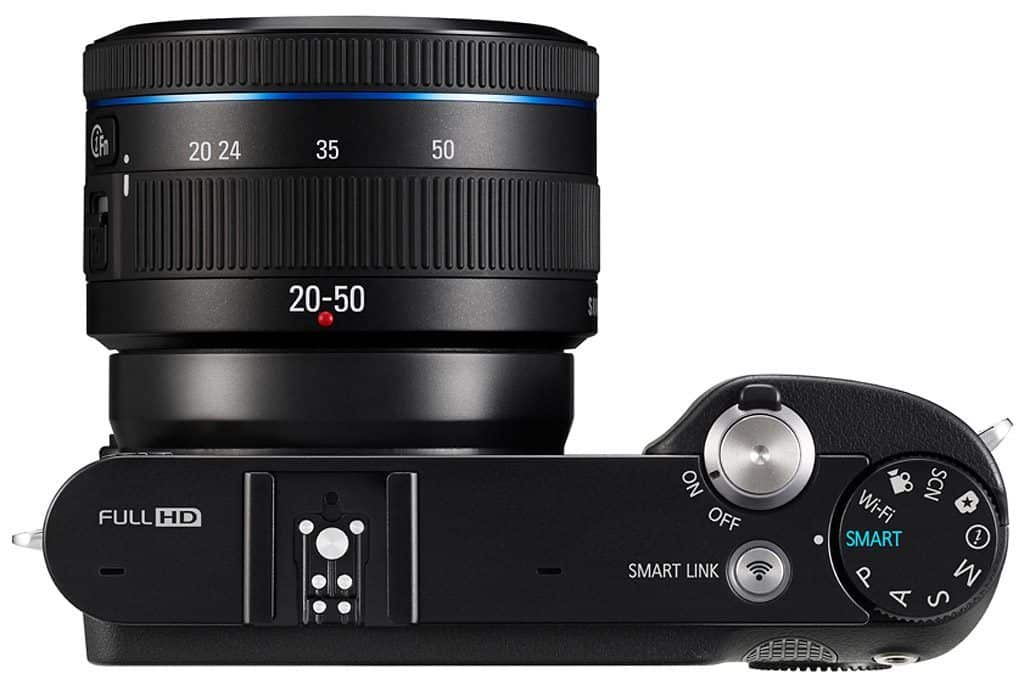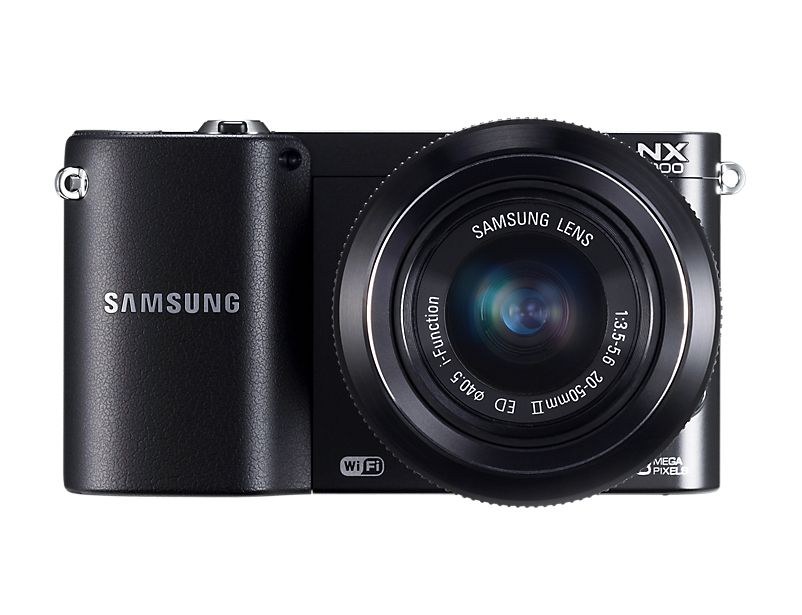Table of Contents
amazon Samsung NX1000 reviews
This is the most attractive model in the current NX trio along with the Samsung NX210 and Samsung NX20. At around $800, the NX1000 will compete directly with Sony NEX-3 series as well as Canon’s EOS M.
The advantage of the NX1000 series is that it has 15 lenses that cover all the focal lengths, while the NEX series from Sony are popular, but the number of compatible lenses is still small and rare.
Samsung NX1000 uses a 20.3-megapixel APS-C CMOS sensor measuring 23.5 x 15.7 mm, ISO support of 100 to 12,800, shooting speed of up to 8 frames per second, video recording capability Full HD at 24 frames per second. In addition, the HD camcorder delivers a 2.35: 1 super-wide aspect ratio by cutting out Full HD resolution by 1,920 by 810 pixels. The machine can shoot Cinema video at a rate of 24 frames per second.
Samsung NX1000 is more like the more expensive version of the NX series NX210. The machine also has an angular design and large comfortable grip but the shell material is made of plastic instead of metal. Only a handful of parts are clamshell, socket, tripod, or lampstand. They are, however, incredibly solid when compared to the material used. This good impression comes also when using the grip extruded just enough for Asian hands in general.
At 114 x 62.5 x 37.5 mm, the NX1000 is a bit smaller than the NX210. This compactness also makes it possible to sacrifice the electronic viewfinder and turn the flash into an external mount (SEF-15A). Although it is included with the camera, but the addition also makes the machine more bulky when stored in the bag and can not attach EVF at the same time when the option to buy more.
The layout of the NX1000’s buttons is aimed at maximum simplicity and is not much different from the compact cameras on the market. Above is the mode wheel, integrated power ring and Smart Link buttons help Samsung emphasize the intelligence and ability to share differences on the camera. On the back, the NX1000 features a dedicated movie key for quick operation in a number of situations. A dedicated Fn key also helps the user to change capture parameters through a quick and intuitive display menu.
For the new NX-series cameras and lenses, the Samsung i-FN features a distinct difference on the lens. By pressing this button with the lens rotation, users will quickly change the parameters such as aperture, speed, ISO … Samsung wants to bring a professional twist like the machine. DSLR but actually used shows that when the button is pressed, the rotation on the camera is more convenient and easy to manipulate than the rotation on the lens. Still, this is a unique feature that makes the NX Series reflect the difference with the mirrorless machines on the market.
Not yet established in the camera market, Samsung has chosen a new and appropriate approach to the field. These are smart features. When you press the Smart Link button on the machine, users can immediately set up sharing on social networks like Photobucket, Facebook, Picasa, Youtube … if the machine is connected to Wi-Fi Internet. The upload is pretty fast though it is quite time-consuming to write information for your photos by navigating through each letter.
In addition to sharing directly to the social network, if users use smart phones can copy data directly from the NX1000. In particular, Mobile Link Mobile software for copying images directly from your computer or Remote Viewfinder will help to edit parameters and take pictures remotely. However, the live-view image from the camera transferred to the phone occasionally happens to be lagged due to the fact that the connection is not really stable. The NX1000 can connect Wi-Fi directly to phones by acting as a transmitter so users can use it anywhere without a fixed source.
where can you get a Samsung NX1000 online
Samsung NX1000 Mirrorless Digital Camera with 20-50mm Lens, 20.3MP (Black): Buy it now
Samsung NX1000 20.3 Megapixel Mirrorless Camera (Body with Lens Kit) – 20 mm – 50 mm – White: Buy it now
Samsung NX1000 Black ~ 20.3MP Digital Camera Body Only: Buy it now
In addition to the clever connection, Samsung also allows users to simply edit and add effects to the image as soon as they have finished shooting. The filters are quite rich and still retain the original size of the image. This includes 10 smart filters and 12 frames including Soft Focus for warming up the photo or Half-Tone Dot like a comic. However, each time the filter is applied, the processor slightly longer may be due to the size of the 20.3 megapixel.
The back panel of the NX1000 is 3 inches in 921,000 pixel resolution. Although not with Amoled technology like the NX210, this makes the NX1000 images can be used to track the color accuracy of the photo instead of the glow like Amoled on the NX210. The product can also be used outdoors in bright light, although the colors are a little faded and sometimes have to get hands to see the picture clearly. In addition, thanks to the built-in gyroscope sensor, the machine shows two axes on the screen allowing the user to adjust the balance of the machine.
The NX1000 uses a dust-proof system like the older NX100 and NX10 models that allow the sensor to vibrate 60,000 times per second. By default, this feature is disabled, but experience has shown that this feature should be enabled when you start using your device. It works every time it starts up and only takes a second, but reduces the impact of dirt.
Another interesting feature of the NX1000 is its priority lens priority mode. When turned on, the camera will automatically recognize the lens being attached and provide a list of scene modes to suit the particular lens. This can also be considered part of smart mode but more effective. This mode also allows users to select 6 of the 10 filter effects that the camera provides.
Samsung’s Smart Auto is the equivalent of smart auto mode on many other camera models. When turning the wheel toward the blue Smart, it automatically recognizes the scene or subject in 16 pre-set situations for optimum results. This will make the user not too concerned about adjusting modes such as scene, macro macro. In general, this feature performs well in terms of scene recognition but is probably less used with a mirrorless line.


